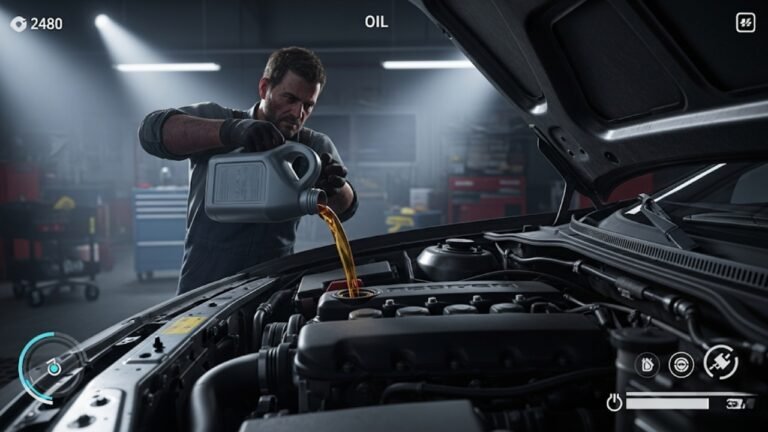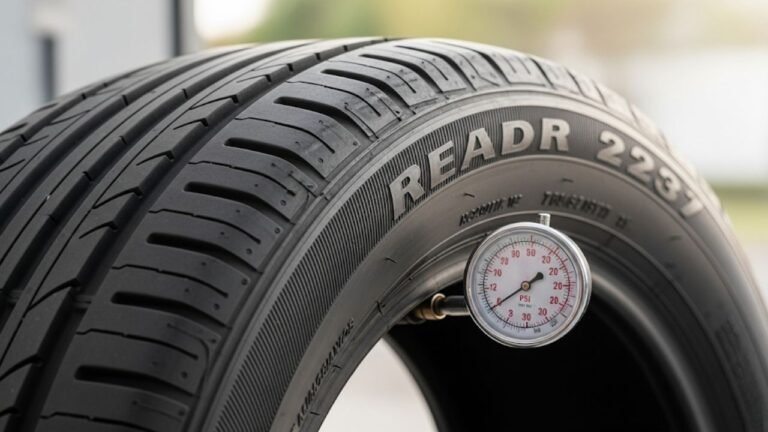Where Is the Catalytic Converter on a 2010 Toyota Corolla? A Friendly Guide

Have you ever felt that strange anxiety when your car makes a weird sound or throws a warning light? Yeah, I’ve been there too. If you drive a 2010 Toyota Corolla, chances are, at some point, you’ve wondered: “2010 Toyota Corolla where is catalytic?” Whether it’s for a quick repair, a replacement, or just plain curiosity — knowing where the catalytic converter is located is essential.
Let’s dive deep into this topic — not just with cold facts, but with warmth, personal insights, and real-world explanations that make sense.
What Is a Catalytic Converter (In Plain Language)?

Here’s how it helps:
-
Reduces harmful emissions (like carbon monoxide, hydrocarbons, and nitrogen oxides).
-
Helps your car pass emissions tests.
-
Prevents pollution and protects the environment.
-
Supports engine performance by ensuring clean airflow.
It’s made with rare metals like platinum and palladium — yes, actual precious metals! That’s why catalytic converter theft has become sadly common.
️ 2010 Toyota Corolla Where Is Catalytic Located Exactly?
Let’s get straight to it.
In the 2010 Toyota Corolla, you’ll find TWO catalytic converters:
-
Primary (or Manifold) Catalytic Converter – Located directly attached to the exhaust manifold, under the hood.
-
Secondary (or Underbody) Catalytic Converter – Located further underneath the car, along the exhaust pipe.
Yes, your Corolla is a bit of an overachiever — it has two!
Why Two Catalytic Converters?
Think of it as a two-stage filtration system:
-
The first one handles the intense emissions directly from the engine.
-
The second one ensures any leftover gases are cleaned before exiting the tailpipe.
Together, they help meet tough emission standards without compromising performance.
How to Spot It Under the Hood (DIY Style)
You don’t need to be a mechanic to find your converter.
Here’s what to look for under the hood:
-
Pop the hood.
-
Look down at the engine block toward the rear or center.
-
Find the metallic part attached to the exhaust manifold — it looks like a small metal canister with a heat shield.
-
That’s your primary catalytic converter.
Underneath the Car:
-
Safely lift the car with a jack and use jack stands.
-
Slide under the center of the car.
-
Trace the exhaust pipe from the engine.
-
You’ll see another metal container in the pipe line — that’s your secondary converter.
️ Quick Location Table for Your Reference:
| Type of Converter | Location | Access Difficulty | Function |
|---|---|---|---|
| Primary | Engine bay, on exhaust manifold | Moderate | Handles initial emission output |
| Secondary | Under the car, mid exhaust pipe | Easy | Final emission filtering |
Why Knowing This Matters (Seriously!)
You may wonder, “Why do I even need to know this?” Good question.
Here are some real reasons:
-
If your check engine light is on, the converter could be the cause.
-
Catalytic converter theft is rising. Knowing where it’s located helps you secure it.
-
Mechanics may suggest a replacement — you’ll know what they’re talking about.
-
You might want to buy a used part and install it yourself (hello, savings!).
Understanding your car isn’t just about repairs. It’s about control, confidence, and safety.
Symptoms of a Bad Catalytic Converter (Been There, Felt That)
Let me share a quick story. A few years ago, I was driving my friend’s 2010 Corolla on a road trip. Suddenly, it started jerking, lost power, and the check engine light came on. Turns out — the catalytic converter was clogged.
Here are signs your converter might be failing:
-
Poor acceleration
-
Rattling noises under the car
-
A strong sulfur or rotten egg smell
-
Check engine light with codes like P0420
-
Decreased fuel efficiency
If you spot any of these, don’t ignore them. Your Corolla’s telling you something.
How to Check If the Catalytic Converter Is Working
If you’re handy with basic tools or just curious, here’s how you can check the converter:
Use an OBD2 Scanner:
-
Plug it into the diagnostic port (under the steering wheel).
-
Look for error codes like P0420 or P0430.
-
These codes indicate efficiency below threshold — a common catalytic issue.
Infrared Thermometer Trick:
-
Measure the temperature at the input and output ends.
-
The output should be hotter. If it’s not, it might be clogged.
These tricks help you catch issues early and avoid costly replacements.
Cost of Replacement for 2010 Toyota Corolla Catalytic Converter
Here’s a quick breakdown of what you can expect:
| Part | Price Range (USD) |
|---|---|
| OEM Primary Converter | $400 – $1,000 |
| OEM Secondary | $250 – $600 |
| Labor (Per Converter) | $100 – $300 |
| Aftermarket Options | $150 – $500 |
Yup, it’s not cheap. That’s why proper diagnosis and prevention are gold.
️ How to Prevent Catalytic Converter Theft
This one’s close to heart — a friend had hers stolen from a parking lot.
Here’s what you can do:
-
Install a catalytic converter shield or cage.
-
Park in well-lit or secure areas.
-
Etch your VIN number onto the converter.
-
Add security cameras or alarms under the car.
Thieves usually go for easy targets. Don’t be one.
Is It Legal to Drive Without a Catalytic Converter?
In most states and countries? Absolutely not.
Driving without a catalytic converter is:
-
Illegal under EPA regulations.
-
Harmful to the environment.
-
Likely to fail your emissions test.
-
Risky — it may void your insurance or warranty.
Even if your car “feels okay” without it, you’re still violating the law.
Common Myths About Catalytic Converters
Let’s clear the air.
Myth 1: “Removing it gives better horsepower”
-
Truth: It might feel faster, but modern engines are tuned for it. Removing it can cause engine damage.
Myth 2: “It never needs maintenance”
-
Truth: While it’s low-maintenance, it’s not immune. Oil leaks or bad fuel can clog it over time.
Myth 3: “You only need one”
-
Truth: 2010 Toyota Corolla has two, and both are necessary.
Maintenance Tips to Extend the Life of Your Catalytic Converter
The best way to avoid expensive repairs or replacements? Treat your catalytic converter with care. Here’s how to help it last as long as possible:
✅ Use Quality Fuel Only
Avoid the cheap stuff. Low-quality gas may contain additives that can clog your converter over time. Go for Top Tier fuel, if available in your area.
✅ Fix Engine Problems Early
An engine misfire can overheat your converter, damaging it fast. If your Corolla’s check engine light blinks or flashes, get it checked immediately.
✅ Avoid Driving with Low Oil or Coolant
Your converter relies on a healthy engine. If your engine burns oil or runs hot, unburnt fuel can enter the exhaust and melt the converter’s core.
✅ Keep Up With Routine Maintenance
Spark plugs, oxygen sensors, and fuel injectors all impact emissions. If one of those goes bad, your catalytic converter may suffer.
Differences Between Corolla Catalytic Converters and Other Models
It’s helpful to compare how the 2010 Toyota Corolla stacks up against other vehicles when it comes to catalytic systems.
| Vehicle | Catalytic Converter Setup | Special Notes |
|---|---|---|
| 2010 Corolla | 2 converters (manifold & underbody) | Easy access; prone to theft |
| Toyota Camry (2010) | 2 converters, more expensive parts | Similar setup, larger engine |
| Honda Civic (2010) | 1 converter in engine bay | Simpler, but less emissions redundancy |
| Prius (2010) | 3-way converter, hybrid optimized | Very expensive due to precious metals |
| Ford Focus (2010) | 1 underbody converter | Less complex, cheaper to replace |
So if you’ve moved from a Civic or Focus to a Corolla, the dual converter system might be new to you.
Can I Upgrade to a Better Catalytic Converter?
Technically, yes — but with big warnings.
You could:
-
Install a high-flow catalytic converter for better performance.
-
Use aftermarket parts for cost savings.
But beware:
-
You must meet local emissions laws — especially in strict states like California.
-
Using the wrong part can cause a check engine light or failed inspections.
-
Toyota ECUs (Engine Control Units) are picky — they like OEM or certified equivalents.
Unless you’re tuning your car for racing (and even then…), it’s usually best to stick to OEM or EPA-certified converters.
Signs It’s Time to Replace (Not Just Clean)
Many people ask, “Can I just clean it?” You can try, but if your catalytic converter has melted, broken apart, or been contaminated, it’s a lost cause.
Red flags it’s beyond repair:
-
You hear a metallic rattling when idling.
-
Your car won’t accelerate past 30–40 mph.
-
Thick black smoke from the exhaust.
-
Failed emissions test, even after tune-ups.
A mechanic can do a backpressure test or use a borescope to look inside. If the honeycomb structure is damaged — it’s time for a new one.
Environmental Impact of a Working Catalytic Converter
This isn’t just a car part — it’s a planet protector.
A healthy catalytic converter:
-
Reduces 95% of harmful gases from your engine.
-
Converts toxic gases into carbon dioxide, nitrogen, and water vapor.
-
Helps meet federal emissions standards, making our air cleaner.
In cities with smog problems, every working catalytic converter literally helps people breathe better. That’s a big deal.
Fun Fact: Why It’s Called “Catalytic”?
The word “catalytic” comes from the word catalyst — a substance that causes a chemical reaction without changing itself.
So, in your Corolla, the converter uses platinum, rhodium, and palladium to trigger reactions that change deadly gases into less harmful ones — without burning up itself.
It’s chemistry magic happening under your car. Every. Single. Day.
Frequently Asked Questions (FAQs)
1. How many catalytic converters does a 2010 Toyota Corolla have?
It has two — one on the exhaust manifold (primary) and one along the exhaust pipe (secondary).
2. Can I replace the catalytic converter myself?
Yes, if you have the tools and some DIY skills. But safety is key — always lift the car securely and follow guides.
3. How long does a catalytic converter last?
Typically around 10 years or 100,000 miles — though it can fail earlier due to fuel problems or engine misfires.
4. Can a clogged catalytic converter damage my engine?
Yes. If your converter is clogged, it can cause backpressure. That makes your engine overheat, reduces performance, and can damage internal components.
5. How much time does it take to replace a catalytic converter on a 2010 Toyota Corolla?
Typically, it takes 1.5 to 3 hours, depending on whether you’re replacing the primary or secondary converter.
6. Do I need both converters to pass emissions?
Yes. Both the manifold and underbody converters are part of your Corolla’s emissions system. If either one fails, you could fail inspection.
7. What is the code for a failing catalytic converter in a 2010 Toyota Corolla?
The most common is P0420, which means “Catalyst System Efficiency Below Threshold.”
8. Can I drive short distances with a bad catalytic converter?
Maybe, but it’s not safe. You risk engine damage, poor fuel economy, and failing emissions — not to mention potential legal issues in some areas.
Summary Table: Key Takeaways
| Topic | Quick Answer |
|---|---|
| Main Keyword | 2010 Toyota Corolla where is catalytic |
| # of Converters | Two: Manifold (primary), Underbody (secondary) |
| Location | Engine bay + under the car along the exhaust pipe |
| Common Issues | Clogging, overheating, theft |
| Replacement Cost | $300–$1,000+ depending on OEM or aftermarket |
| Lifespan | 100,000+ miles with proper care |
| Diagnostic Code | P0420 most commonly |
| Replacement Difficulty | Moderate (DIY possible with tools and safety gear) |
Final Thoughts: Don’t Let the Converter Confuse You
I get it — car repairs are overwhelming. But you’re not alone. Every driver of a 2010 Toyota Corolla has probably typed in something like “2010 Toyota Corolla where is catalytic” while trying to understand their car better.
And here’s the truth:
Knowing your catalytic converter’s location, function, and warning signs doesn’t just save you money. It helps you become a more confident, empowered car owner. Whether you’re prepping for a repair, avoiding theft, or just learning — this knowledge gives you control.
So next time someone brings up “catalytic converters,” you can confidently say:





